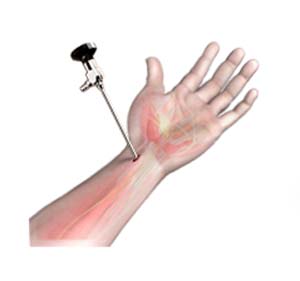What is Arthritis of the Wrist?
Arthritis develops when the cartilage surrounding bones wears out, resulting in pain, stiffness, and inflammation in the joints. It can affect any joint in the body, including the wrist.
Symptoms of Arthritis of the Wrist
The symptoms of arthritis of the wrist usually include swelling, pain, stiffness, and malformation, all of which interfere with the use of the wrist.

Diagnosis of Arthritis of the Wrist
Your doctor can usually make the diagnosis of arthritis by examining the wrist. X-rays of the wrist may be ordered to determine the severity of the disease, as well as identify any bone spurs or calcium deposits.
Treatment for Arthritis of the Wrist
Non-surgical treatment methods for relieving pain in an arthritic joint include activity modification, anti-inflammatory medications, use of splints, and steroid injections. Surgery is usually considered when non-surgical treatment fails to give relief. There are different surgical procedures that can be used:
- Arthroplasty: In this procedure, your surgeon removes the affected joint and sometimes replaces it with an artificial implant. This is frequently reserved for older, low-demand patients.
- Arthrodesis: A fusion, also called an arthrodesis, involves the removal of the joints and fusing the bones of the joint together using plates and screws. Even though this surgery eliminates all motion of the involved joint, the resulting fusion is very durable.
- Proximal Row Carpectomy: This procedure involves removal of three of the bones of the wrist. This option may be recommended when arthritis is more moderate. This procedure preserves some wrist motion.
